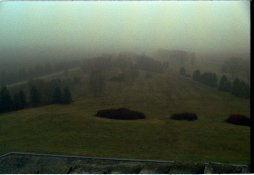Thank you all, guys, for you response!
Special thanx to PE and Rudeofus for sharing your knowledge! =)
I did two tests:
1) I developed two 135 films in 300ml instead of 500ml , Stop Bath 300ml, wash, Blix 300ml.
After pouring developer in I put the tank on running Jobo. It took approximately 4 seconds.
There are no more purple streaks but several surge marks appeared on every frame with skies and snow.
View attachment 99705
2) I developed 120 Portra 400 in 300ml instead of 500ml , Stop Bath 300ml, wash, Blix 300ml.
After pouring developer in I inverted the tank 4 times by hand. One inversion in one second.
I can't see any stains and streaks this time, but I can see very slight difference between part of negative which was covered by developer right after I filled the tank and the part which got the developer after I turned the tank.
I think it was insufficient agitation in developer and stop bath due to excessive volume of solutions in the tank. So, next problem is how to get rid of uneven initial wetting with developer.
I also think that I should try to develop without machine, by hand, as I did before I had bought Jobo CPE. And here is another question: Can you recommend and explain in details effective agitation method for hand development with 1520 tank full of developer?
For years I tried different methods for BW films and every time my films (roll films) were more or less overdeveloped along edges and I routinely burn in under enlarger.













